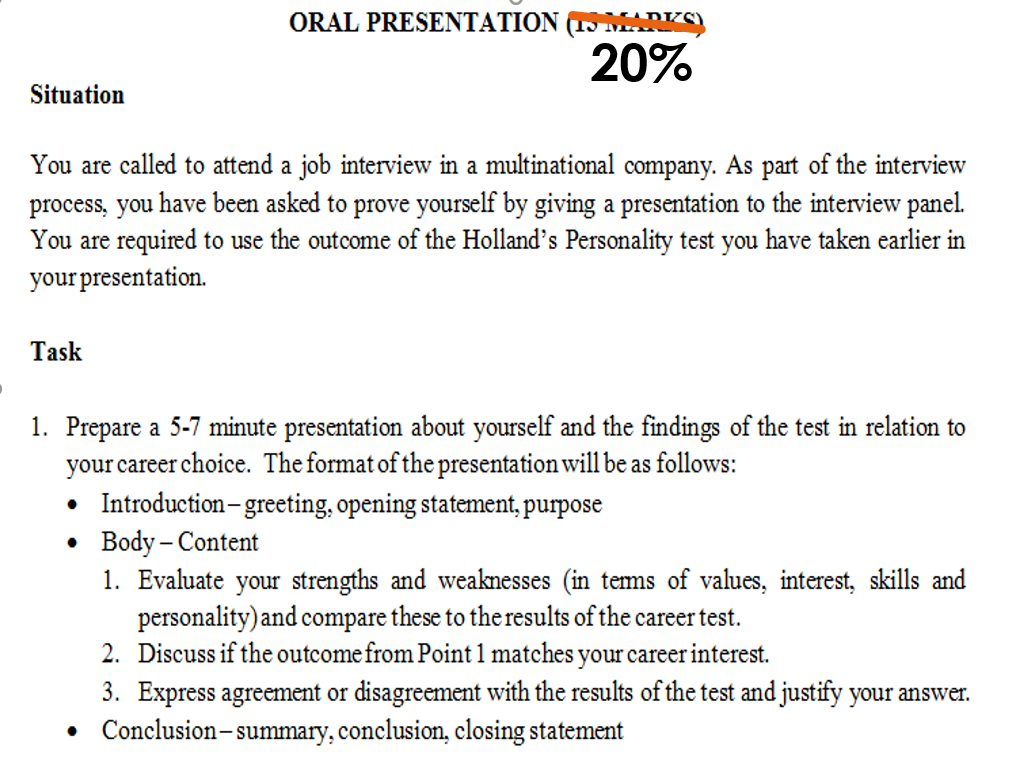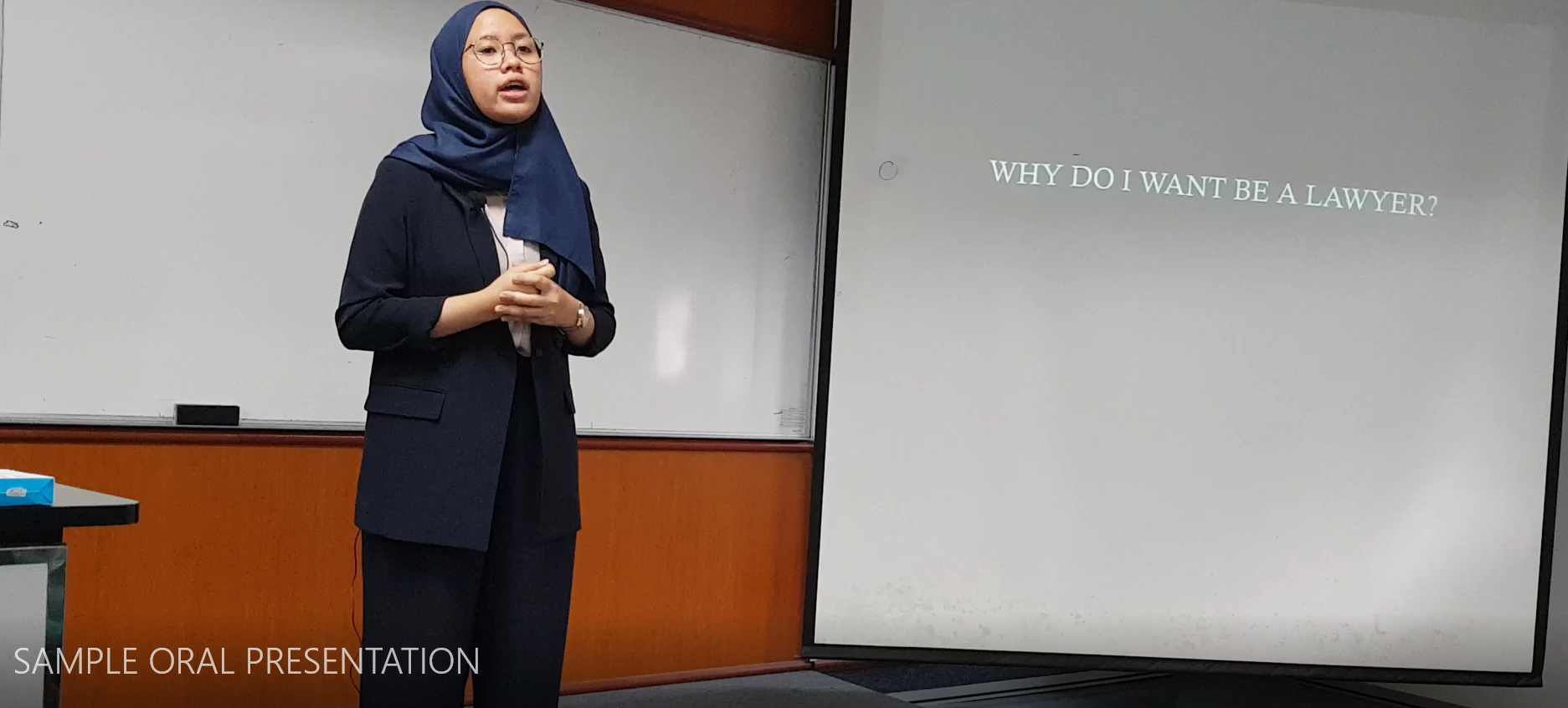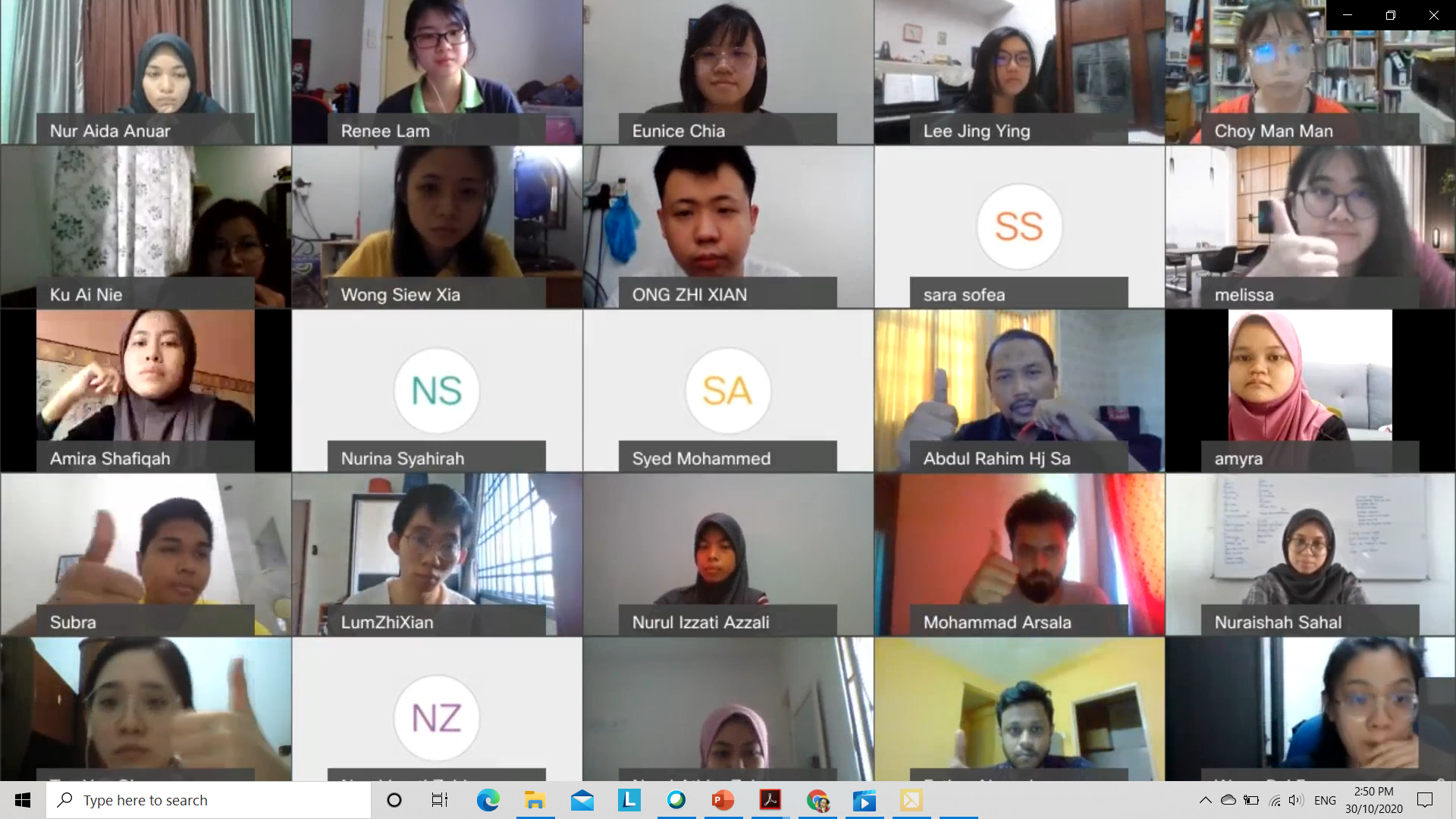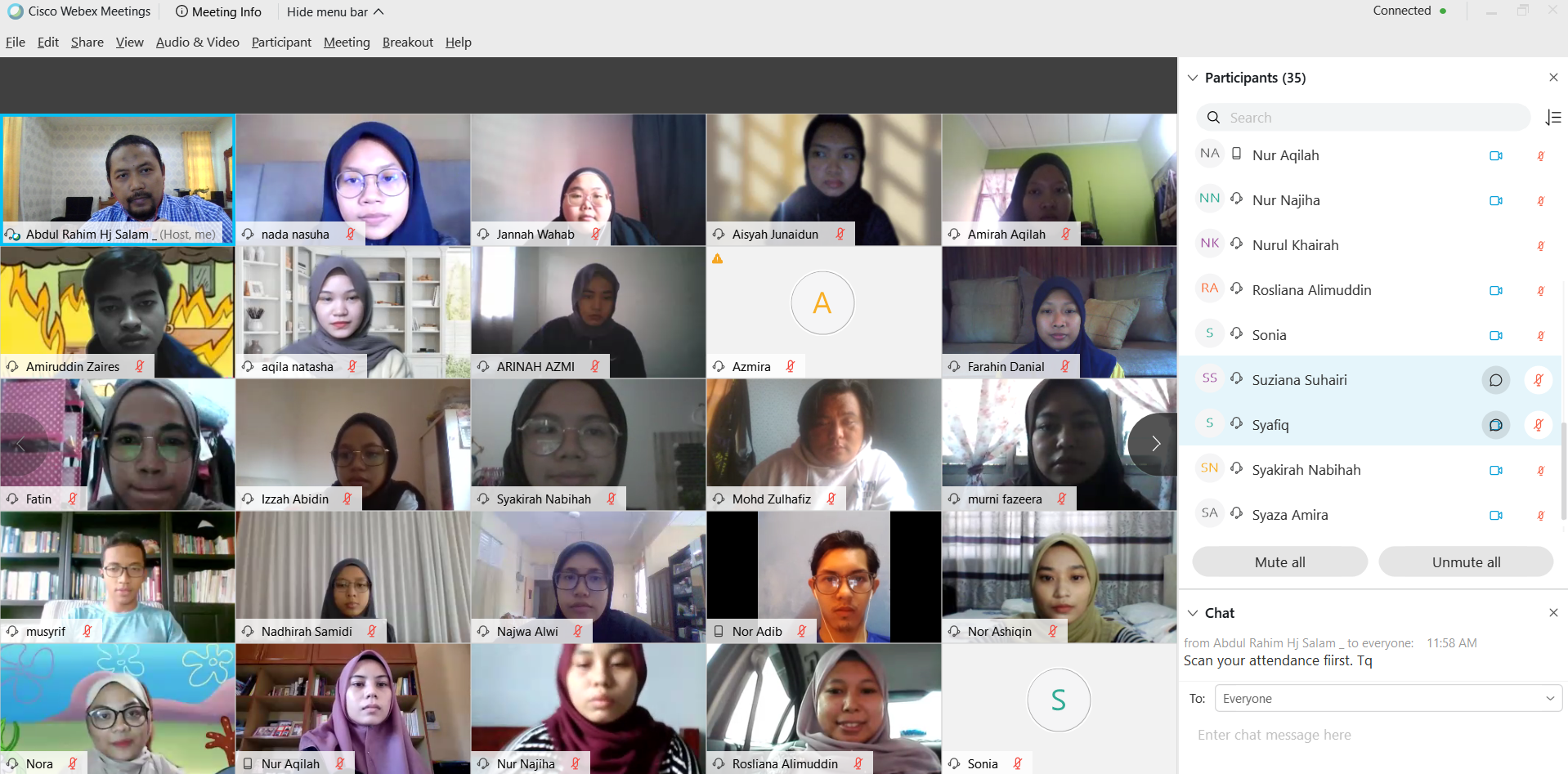ORAL PRESENTATION
THE TASK

 Loading...
Loading...
WORDS USED TO DESCRIBE PERSONALITY












SAMPLES
https://ileague.utm.my//resume-and-video-cv-guidelines/


PLEASE CLICK HERE AND USE THE GIVEN GUEST/FAMILY PASSWORD BELOW TO VIEW FLIPGRID ACTIVITIES






THE TASK

 Loading...
Loading...
WORDS USED TO DESCRIBE PERSONALITY












SAMPLES
https://ileague.utm.my//resume-and-video-cv-guidelines/


PLEASE CLICK HERE AND USE THE GIVEN GUEST/FAMILY PASSWORD BELOW TO VIEW FLIPGRID ACTIVITIES






This course provides overview of theories and applications of technology in disseminating information with relevance to the fundamental concepts of CMC. Established and emerging modalities of computer mediated communication and mediums will be explored to further understand how human-to-human communication interactions have been influenced or altered through the use of computer technology. Using computer technology as a tool for communication, students will discuss and review critically issues on CMC from both research and practical perspectives.




Discuss basic theories and contemporary issues concerning CMC.
Review and analyse research articles on CMC
Create and present CMC platform in the form of E-Portfolio Website using suitable digital technologies and appropriate software
Compose an email and personal write-up using appropriate language effectively
Demonstrate ability for autonomous learning
Discussion Entries for online classes give you the opportunity to talk/write about course topics with each other, and with the instructor, as you would if you were in a traditional classroom. This helps you absorb the class material and share ideas.
A critical analysis paper asks you to make an argument about a particular article in which you are identify and explain the argument that the author is making and provide your own argument about that argument. One of the key directions here is evaluating the author’s argument.
This project gives you the opportunity to create personal websites that: Communicate and showcase skills, experiences, and learning. Contain diverse artifacts—documents and media that may include a collection of work (evidence) in an electronic format that showcases learning over time.
A common business tool; and the ability to give a good oral presentation is regarded as an integral part of your study. Regardless of the context, you have to make sure that your message is delivered effectively.
The discussion requires you to engage with the activity to interpret and describe the significance of research findings in light of what was already known about the research problem being investigated and to explain any new understanding or insights that emerged as a result of the research problem.
MPPZ1323 – Critical Review Paper (20%)
Task Assignment:
In a group of 4, find 2 articles (Each pair will search for one article) related to CALL research topic of a similar subject/theme (e.g on The Use of Social Media, E learning, Online language learning Environment, etc).
CALL CRITICAL REVIEW GROUP MEMBERS DISCUSSIONS
DISCUSS and RECORD (with your group members via GOOGLE MEET (without turning on the video but with cc activated) for lower bandwidth consumption) what topic/articles that you will choose. Why do you choose the theme/subject? (TO COMPLETE THIS TASK 9.11.20 BY 7.00 PM) Share the recording with sitinorzaimalina@graduate.utm.my and m-arahim@utm.my
E.g https://login.ezproxy.utm.my/menu and Choose SCOPUS – SELECT KEYWORDS -TYPE CALL
4. Individually, RECORD your personal critical view on the article you read via flipgrid
https://flipgrid.com/28848f4e (5 – 7 minutes max).
Some considerations when reviewing:
What is the title? Aims/Objectives/Research Questions, Type of Research, Research Instruments, Participants, Procedure, Findings. Your thoughts about the article? – is it appropriate or relevant, useful, informative, interesting, timely? Why do you think so? Support this with examples from the article and maybe from other similar articles that you have come across • To what extent would you agree/disagree with the author’s/s’ ideas/article? Why? • Strengths and weaknesses of the article? Support this with examples from the article.
5. View and listen to the flipgrid recording of your group members’ article (UNTILL 16NOV).
6. Finally RECORD using GOOGLE MEET, critically synthesize both articles by addressing these questions:
• What are the similarities between both articles? Support with examples in the articles.
• What are the differences between both articles? (23 NOV TO COMPLETE THIS TASK)
* Whatever means of discussion that you use other than the platforms mentioned above (e.g whatsapp chat messages or other chats platform), please include my PhD student Siti Nurzaimalina (0127281587) in the group as the “participant observer” in the interaction process.
7. Submit the final write-up of the CRITICAL REVIEW PAPER ( STARTING 30 NOV 2020) via Google Classroom and the form below.
INSTRUCTIONS FOR THE WRITE-UP SUBMISSION:
At the top of your critical review, write your name and metric number. Then write the full bibliographic entry of both articles you are reviewing, for example:
Stating the title of each article, how the article was divided, and perhaps the significance of these subheadingsin the Introduction paragraph with a clear thesis.
SAMPLE OF A SIMPLE CRITICAL REVIEW PAPER






You